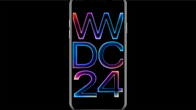
2024 is definitely the year of AI. Smartphone brands are touting features where you can not only edit photos to perfection but also live translate your conversations and fix the tone of messages effectively eliminating the communication barrier among people. MediaTek is at the forefront of AI with its new flagship chipsets catering to the needs of the future today! We had the opportunity to talk to Dr Finbarr Moynihan, Vice President, Corporate Marketing at MediaTek to not only understand what AI is in smartphones but also a peek into the future and what it means for MedaiTek’s OEM partners that will make these AI-powered smartphones.
Q: Can you shed some light on what is Generative AI and how will it change the smartphone landscape?
Dr Finbarr: So smartphones have been using AI for a while now. It is usually used for things like computational photography, language translation, etc. However, generative AI promises to take things up a notch. Simply put, Generative AI is a type of artificial intelligence that can create new content, such as images, text, or music, based on patterns and examples it has been trained on. For example, it can help rewrite text messages in different tones or even manipulate objects within photos. When it comes to Augmented Reality (AR) or Mixed Reality, generative AI can contribute to the development of immersive and interactive experiences by generating lifelike virtual environments and objects.
But that’s not all, it can also help understand and interpret complex language structures, converting them into actionable code, thereby making interactions with smartphones more conversational and responsive.
Another point to note is that as processors get more powerful, a lot of data processing can be performed directly on the device. This not only speeds up processing times but also helps to address privacy concerns by minimising reliance on the cloud.
Obviously, all the major players in the smartphone industry are actively integrating AI into their products. A recent CounterPoint report noted that over a billion generative AI smartphones are predicted to be shipped during CY2024-2027. We have already been helping drive this trend. This will also help reduce the cost as devices will run AI apps natively on the device rather than relying on a cloud solution.

Q: How is Generative AI driving the next wave of innovation in semiconductors?
Dr Finbarr: The proliferation of Generative AI is fuelling demand for chips with enhanced processing capabilities, leading to innovations in areas such as heterogeneous computing. Pretty much all chip manufacturers including MediaTek have been optimising chip architecture to accommodate the demands of Generative AI algorithms. So you get specialised hardware accelerators, such as AI processing units (APUs), that are specifically tailored to handle the computational requirements of Generative AI tasks. These advancements enable seamless integration of AI functionalities into a wide range of devices beyond smartphones. This includes smart appliances, autonomous vehicles, IOT, Enterprise, Industrial and edge computing platforms.
In essence, Generative AI is pushing the boundaries of semiconductor performance by inspiring new architectures, algorithms, and design paradigms. As the semiconductor industry continues to embrace the potential of Generative AI, we can expect a wave of innovation that will redefine the capabilities of future computing devices and empower new applications across industries.
Q: What is MediaTek Hybrid AI – Edge and Cloud?
Dr Finbarr: At MediaTek, we’re helping to accelerate AI adoption at the edge. That means in devices you own at home, your smartphone, and soon in your vehicle too. The aim is to create smarter everyday things that are aware and reactive to your needs and your environment.
Traditional AI, which is AI applied to pre-existing content, can be performed on devices with up to 10’s of TOPS computational performance and is generally limited by the capabilities of the AI processor. Meanwhile, generative AI requires 10X to 100X more performance and is currently more constrained by available memory capacity and performance. The Cloud can solve this problem, but keeping generative AI services locked to the Cloud is too costly and generally limiting in its application scope. With the data kept on-device, edge devices are inherently more secure and can more easily meet data privacy requirements.
But there is more to it. AI in the Data Center, accessible via Cloud services offers the most powerful performance for leading-edge applications, such as Generative AI. Creating a balance between Cloud and Edge devices that takes advantage of both their respective strengths will give the best user experiences.
We at MediaTek have been developing our own AI processors – APU’s – for around several years, and they are already as important as the CPUs and GPUs within our system on chips. We recently launched our 7th generation AI architecture, which is a part of our latest flagship chipset, the MediaTek Dimensity 9300.
We have now reached a point where over 2 billion connected devices are powered by MediaTek every year, many of which contain our APUs. Making us one of the world’s leading-edge AI suppliers. MediaTek also offers a dedicated Enterprise ASIC service for companies looking to build ultra-high-performance customized Data Center AI solutions.
And all this is not new. Since 2014, we’ve been at the forefront of edge AI applications with voice assistants and smart speakers. This has evolved through computer vision and image processing in photography, then videography, media playback, and gaming, into VR and AR, and now into generative AI.
This makes us uniquely positioned to drive and support the adoption of AI applications and technology, whether deployed on the cloud, at the edge in devices, or as a hybrid synergy that takes advantage of both the cloud and the edge together.
Q: How will MediaTek’s foray into AI benefit its OEM partners?
Dr Finbarr: We at MediaTek are uniquely positioned to drive and support the adoption of AI applications and technology, whether deployed on the cloud, at the edge in devices, or as a hybrid synergy that takes advantage of both the cloud and the edge together.
Further, to streamline the product development of our partners, we fully support every generation of APU with our NeuroPilot SDK, which allows developers to tap the full potential of their devices. Meanwhile, our research teams actively investigate and publish scientific papers, journals, and whitepapers about what the next generation of AI could bring.
Not only that, but on-device AI is also more secure, private and uses lower power. All these are key selling points when it comes to end consumers.
Q: For the consumers, can you shed light on some real-world applications where AI will benefit them?
Dr Finbarr: The real-world applications of AI are tremendous. Those who love shopping can enjoy more personalised shopping recommendations with AI assistants as well as better fraud prevention. The Education sector can see an increase in productivity among faculties and help them concentrate more on students than office or administration work. It can also be used to digitise content such as video lectures, conferences and textbook guides. Students can also get a more personalised learning experience based on their needs.
But that’s just the tip of the iceberg. We can see AI being implemented on Autonomous Vehicles, spam filters, facial recognition, robotics and even gaming. AI can also be used to benefit humanity as a whole. I can see a future where AI is used to identify defects and nutrient deficiencies in the soil. This is done using computer vision, robotics, and machine learning applications, AI can analyse where weeds are growing. AI bots can help to harvest crops at a higher volume and faster pace than humans.
Q: Weirdest use of AI that you have heard of?
Dr Finbarr: It’s obviously still very early in the AI, and especially the Gen-AI, era so we can expect a lot of experimentation and development of new applications and use cases. In many ways this is analogous to the start of the dotcom era at the start of the century. That said, I think one of the weirder applications I have seen so far is a Fake News Generator. This may simultaneously demonstrate the power of this new technology, but also a warning to us all about what might be some of the concerning aspects as well.
Q: One gadget you cannot live without (you can’t say smartphone)
Dr Finbarr: Besides my smartphone and laptop that are almost always with me, I think the other device I am more and more using these days is my reMarkable graphic tablet/electronic paper notebooks. It has helped me enormously reduce the amount of paper I use and makes for a more lightweight and portable notebook – capable of holding far more than a paper notebook.
Q: One gadget from your childhood you want your children to experience.
Dr Finbarr: A record player. While I also appreciate the flexibility and vast selection of music that is constantly available with our digital music delivery systems, there is a nostalgic feel to classic vinyl records. It’s good to see that this has been a growing trend in recent years.
Q: The gadget you saw in movies that you wish became a reality.
Dr Finbarr: The universal translator – so we could communicate with anyone in the world in any language. I know work is happening in this area, but a truly universal device would be life changing – as we become a more interconnected world.
Q: Your Favourite Tech Icon
Dr Finbarr: Right now, I would have to say Jensen Huang, the CEO of Nvidia. I have had the opportunity to hear him speak and it’s clear there was a lot of vision and hard work over many years before the company had catapulted into the stratosphere with the recent surge in their GPUs for Generative AI training and Inference. I never imagined I’d see a semiconductor company top the $1T market cap, and now it has well surpassed that level.












